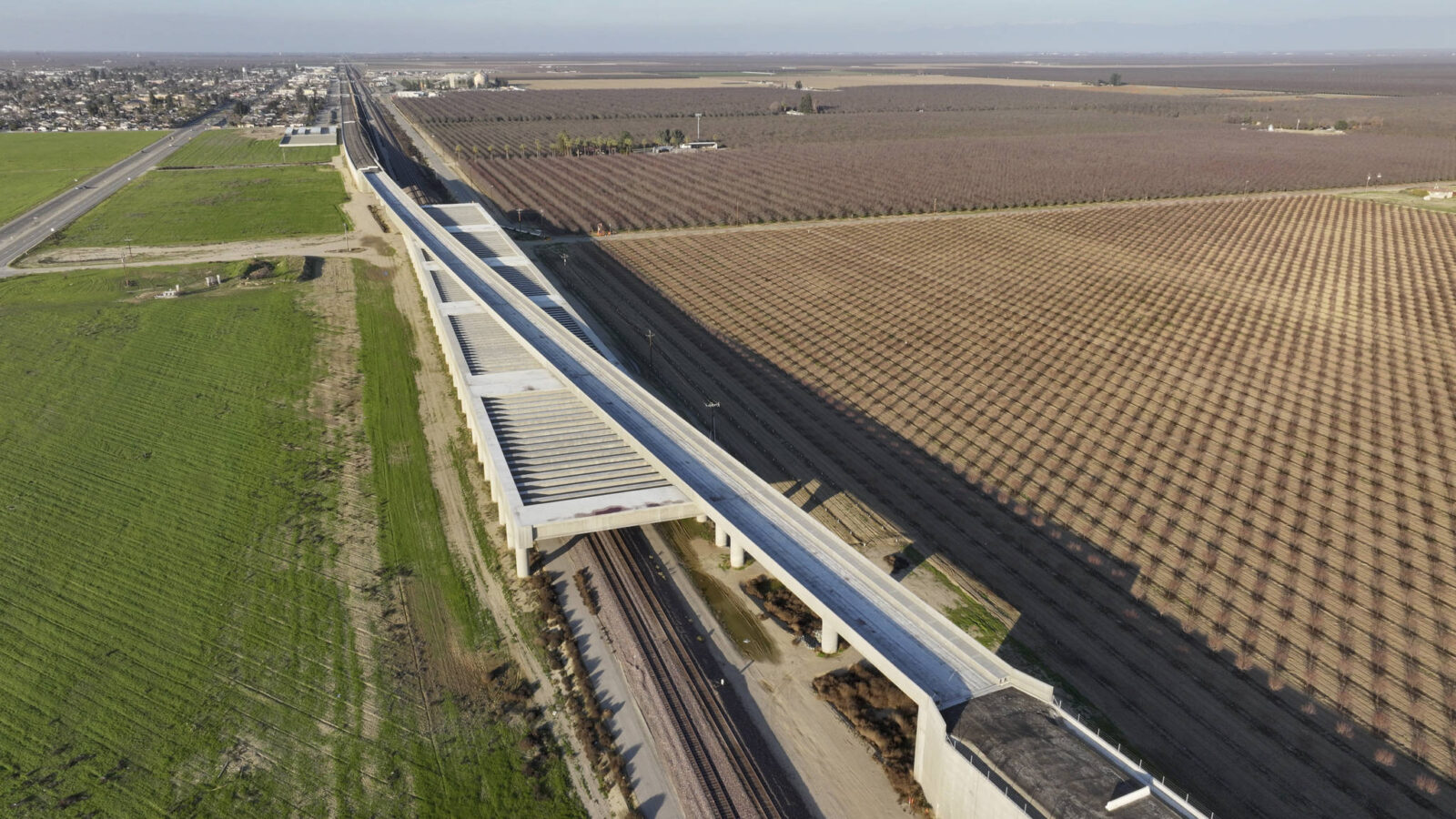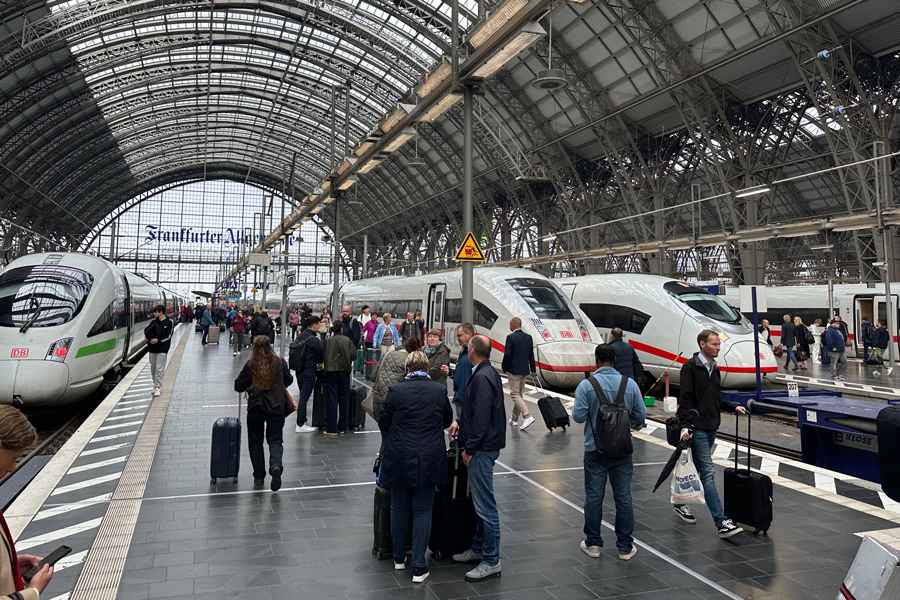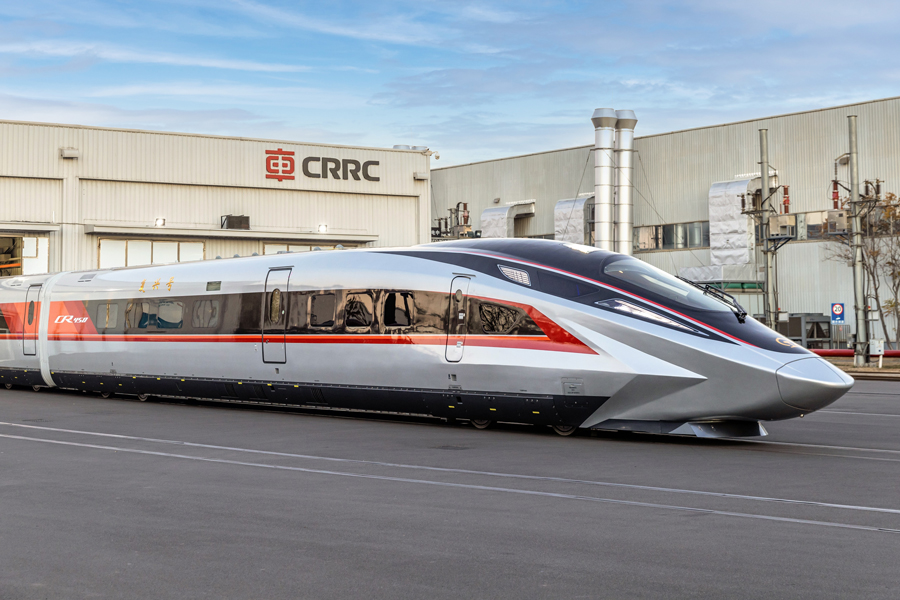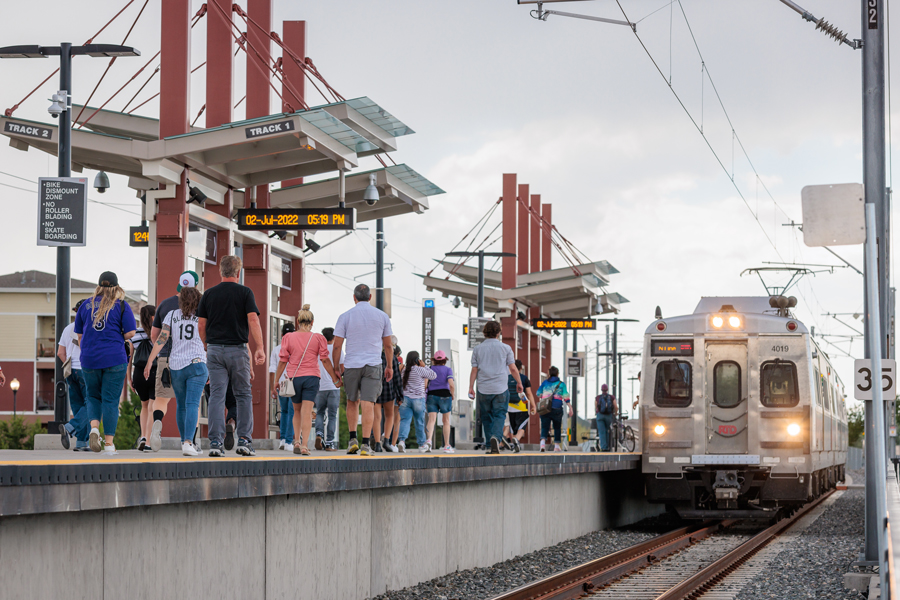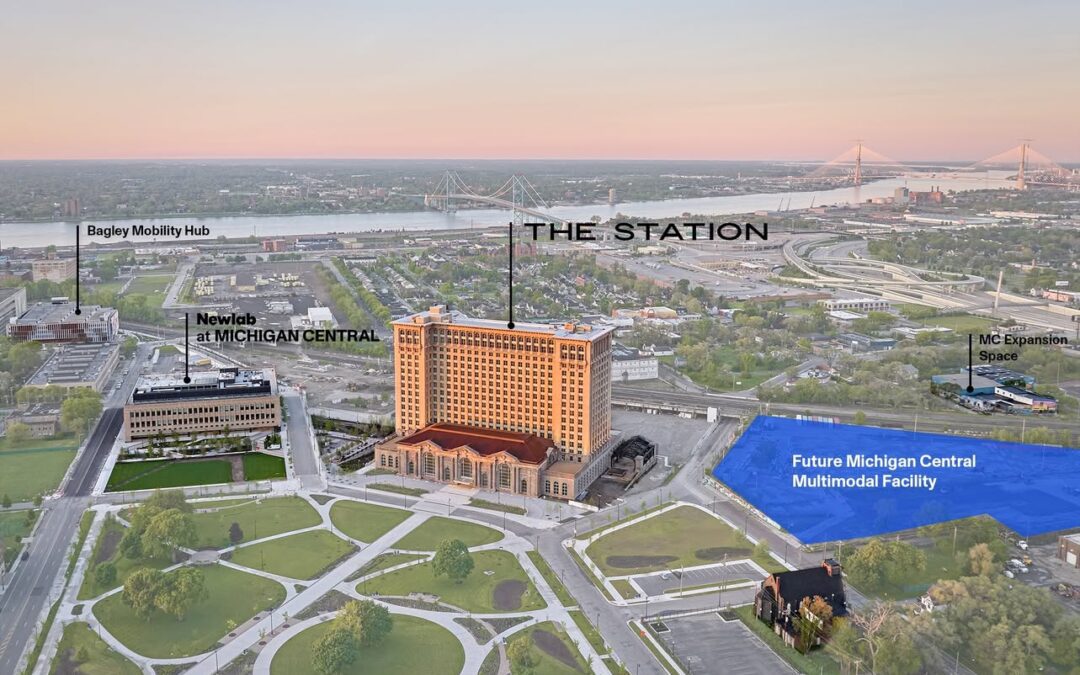At least one-third of Americans do not have access to a car that they could take on a road trip, according to a new study by the Natural Resources Defense Council – and as we’ll discuss, the percentage is probably greater than that. Yet for decades, civil engineers...
California’s high-speed rail project has entered a decisive new phase. After more than a decade of design work, property acquisition, and active construction, the backbone of the system in the Central Valley is well underway. Stretching over 100 miles and comprised of dozens of large civil works, the line is becoming a permanent feature of the landscape. Over 15,000 jobs and billions in local economic benefits have been created during construction, and a new report indicates that – when linked to the Bay Area and Southern California – the system could produce large operating surpluses for decades.
This is a Milestone Moment
Help motivate other regions to catch up by making a donation today.
This summer, the California High-Speed Rail Authority released its 2025 Supplemental Project Update Report, a comprehensive review of the program’s design standards, costs, and funding strategy. Notably, the Authority has revised its engineering specifications to accelerate delivery and lower costs—reducing tunnel and bridge requirements, adjusting speed and clearance rules, and adopting rail-specific seismic and earthwork practices—while maintaining the safety and performance expected of a modern high-speed rail system.
The report lays out costs and timelines for reaching revenue service under three scenarios, showing how each successive expansion—from the Central Valley Section (CVS) to the Bay Area and then to Southern California—elevates the long-term benefits of the project. The Authority also asks the state for more stable funding, more flexibility in where money can be spent, faster approvals, and stronger coordination with outside partners. These changes are framed as necessary to keep construction on schedule, manage costs, and ensure the system can achieve its full potential.
Scenario 1

The 119-mile CVS, from Merced to Bakersfield – where active construction is happening now – is projected to cost about $37 billion. $15 billion of that has been spent to date. Ridership on the CVS alone – Scenario 1 – is estimated at 1.6 to 2.2 million passengers per year, generating up to $90 million in revenue. For comparison, Amtrak’s San Joaquins service, which runs from Bakersfield all the way to Oakland and Sacramento, served 910,000 passengers in 2024.
Scenario 2

Linking the CVS to the Bay Area – Scenario 2 – will involve extending the CVS 85 miles west from Madera, over and through the Pacheco Mountains to the city of Gilroy where it would merge with the southern end of the Caltrain route, the commuter corridor that serves the Santa Clara Valley up through the San Francisco Peninsula. Caltrain recently completed a 7-year, $2.7 billion modernization project that converted the 51-mile section between San Francisco and San Jose (Tamien) from diesel to modern 25 kV overhead electric service and is now running a fleet of new Stadler KISS electric multiple units on this line at 5- to 10-minute intervals during rush hour and every 30 minutes throughout the day.

The 30 miles of the corridor south from San Jose to Gilroy is currently served by Caltrain’s old diesel trains, which run only four times per day in each direction during rush hour. To bring electric, high-speed trains into downtown San Francisco, Caltrain and the high-speed rail authority will need to collaborate on extending the eletrification program from San Jose down to Gilroy. And then over time, the agencies will need to address approximately 70 grade crossings along the entire route from Gilroy to San Francisco so that all of the electric trains can run at higher speeds and cut travel times.
Scenario 2 elevates the total cost of the high-speed rail project to about $54 billion, but the payoff is dramatic: projected ridership climbs to 9 to 12 million annually, driving over $1 billion in revenue. The line would cover its operating costs comfortably, generating up to $644 million in surpluses and setting the stage for sustained private and public investment.
Scenario 3
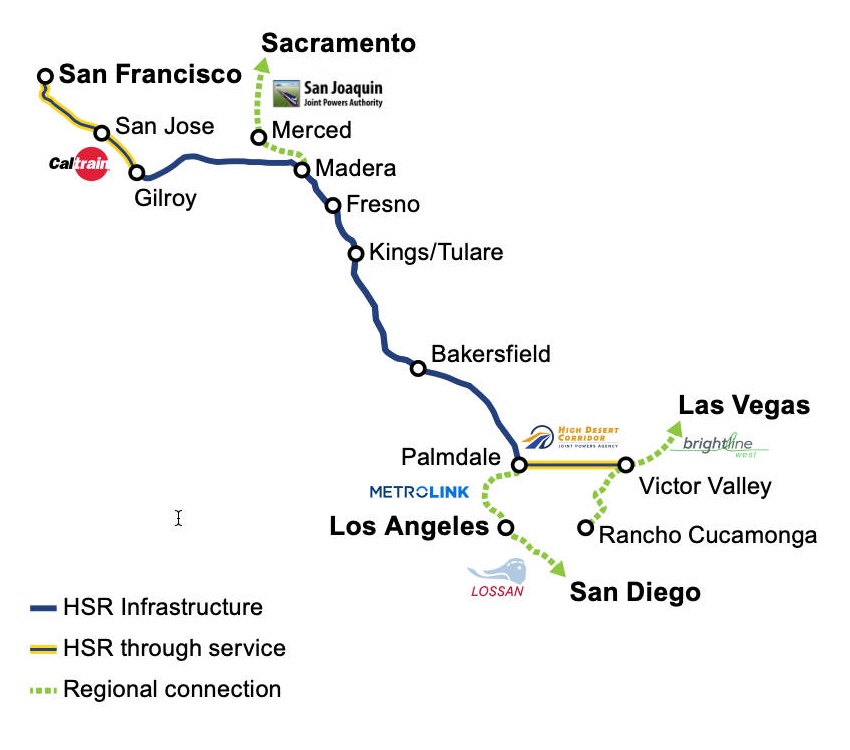
Scenario 3 pushes further south, connecting Bakersfield to Palmdale a city north of Los Angeles across the San Gabriel Mountains. At Palmdale, the high-speed route would result in two transfer points to major cities: one to Los Angeles via the Metrolink Antelope Valley Line and one to Los Vegas via Victorville and the highly anticipated Brightline West high-speed train. While a more ambitious option, with an estimated cost of roughly $87 billion, Scenario 3 would bring in millions more riders and produce the strongest financial outlook. Annual ridership is projected as high as 18 million, producing nearly $2 billion in annual revenue and $1.2 billion in profit. For comparison, Amtrak’s Acela and Northeast Regional service combined serve 14 million passengers annually.
Laying the Groundwork for Growth
To get there, the Authority is asking Sacramento to take action. First, it wants an extension of the state’s “Cap-and-Invest” program, which currently supplies about $1 billion per year in dedicated funding through 2030. The Governor has proposed stretching that program out to 2045, which would add another $15 billion in revenue. With long-term certainty, the Authority can borrow against that revenue stream to finance construction today rather than waiting for funds to trickle in.
Second, it wants to modify a restriction in Senate Bill 198, which caps the use of certain funds outside the Central Valley at $500 million. That cap, the Authority argues, ties its hands and prevents it from sequencing construction in ways that would maximize ridership and revenue. And third, it is calling for regulatory streamlining—particularly in environmental reviews for power interconnections—to ensure that the electric grid is ready to power the trains when the system opens. The Authority is also asking the state to give it stronger tools to hold third parties to enforceable deadlines and cost controls.
California’s high-speed rail is entering a pivotal stretch where the work already accomplished begins to set the stage for revenue service and line extensions to realize the full value of the system. The Central Valley backbone is in place, and with this new report, the California High Speed Rail Authority is charting a clear course toward connecting the state’s major population centers with a profitable system. With sustained state support, thoughtful policy adjustments, and continued steady progress, the project has the potential to deliver not only state-of-the-art transportation but also long-lasting economic and environmental benefits for generations of Californians.
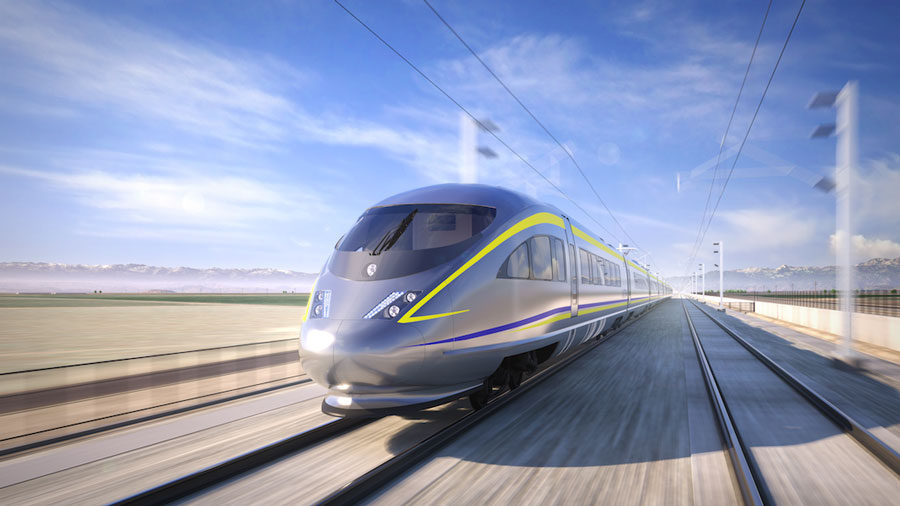
The Latest from HSRA
Our Latest Blog Posts
Check out the latest news, updates, and high speed rail insights from our blog!
